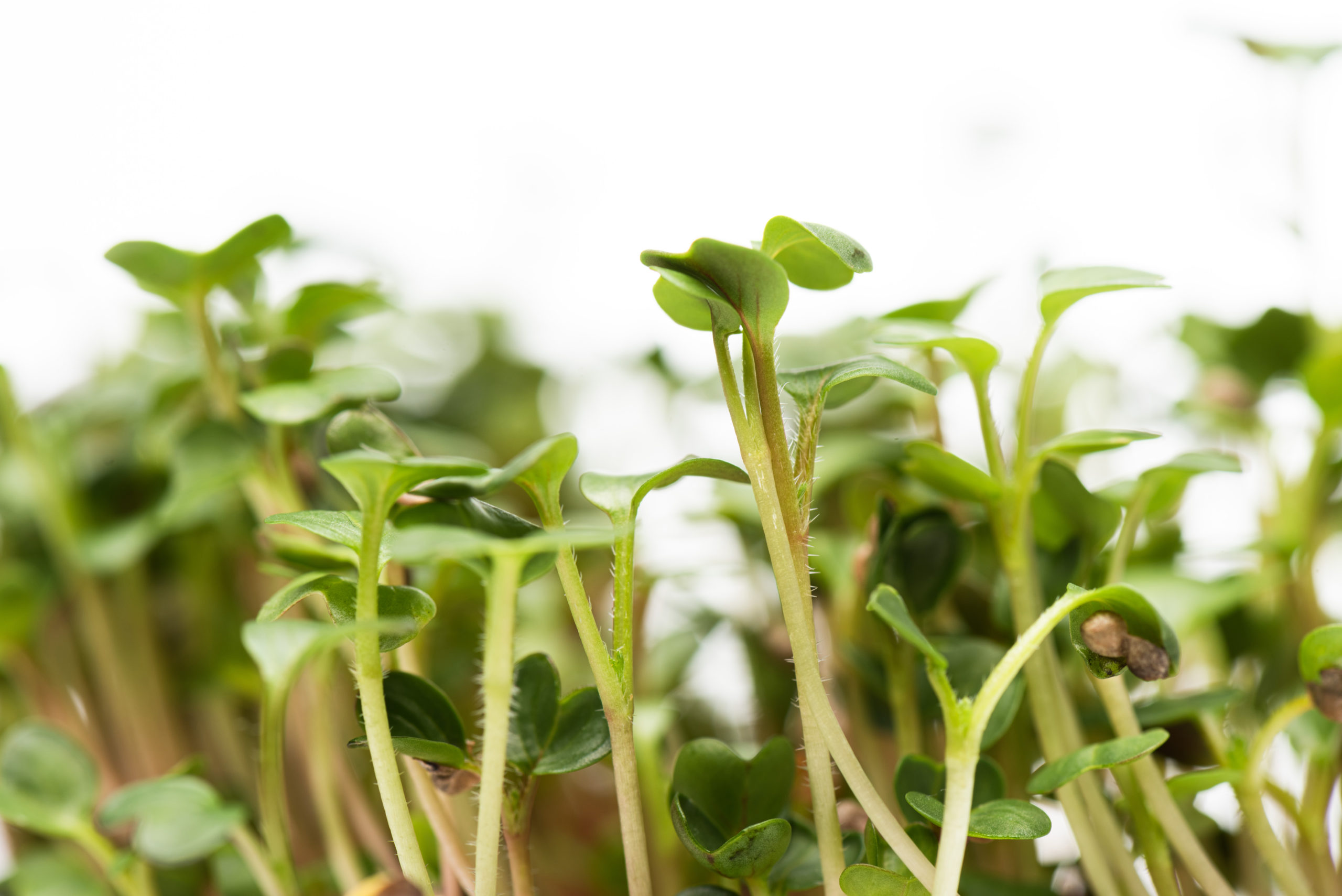Microgreens, a beginners guide. How to grow edible plants at home. What are Microgreens? If you want to improve or just change what you eat, I recommend Microgreens. Microgreens are similar to sprouts but have greater nutritional value. As the name suggests, microgreens are miniature plants of greens, herbs, or other vegetables. Like sprouts, they are a concentrated nutrient source and packed with beneficial enzymes because of their rapid growth. They can be harvested when the germinated seed has developed roots. Microgreens are the next stage in a plant’s development.
Microgreens are cultivated in a growing medium and are trimmed at the base and eaten. Also, microgreens are harvested when they’re a couple of weeks old and have developed their first set of true leaves. They take a little longer to grow than sprouts but are actually lower-maintenance.
Growing microgreens at home

Why grow your own microgreens? Microgreens a beginners guide
There are so many reasons to grow microgreens at home, but the primary reasons are:
- Easy to grow in a limited amount of space
- Quick turnaround– even if a crop is unsuccessful, little time and resource will have been lost, and starting over is straightforward
- An inexpensive way to have a continuous supply of fresh, high-density nutrient greens at home
- A great introduction to gardening for beginners
- No climate restrictions, due to a controlled, indoor environment
- Incredibly healthy, living food to supplement a healthy diet
Microgreens can be grown from many different types of seeds.
The most popular varieties are produced using seeds from the following plant families
- Brassicaceae family: Cauliflower, broccoli, cabbage, watercress, radish and arugula
- Asteraceae family: Lettuce, endive, chicory and radicchio
- Apiaceae family: Dill, carrot, fennel and celery
- Amaryllidaceae family: Garlic, onion, leek
- Amaranthaceae family: Amaranth, quinoa swiss chard, beet and spinach
- Cucurbitaceae family: Melon, cucumber and squash
Cereals such as rice, oats, wheat, corn and barley, as well as legumes like chickpeas, beans and lentils, are also sometimes grown into microgreens
How to grow your microgreens at home
Microgreens are relatively easy to grow on a small scale and can thrive indoors if sunlight is available.
People wishing to grow their own microgreens can follow these steps:
- Scatter seeds over an inch of potting soil in a planter dish or tray and cover with another thin layer of soil.
- Mist the soil with water and place near a source of sunlight or a grow light.
- Continue to mist the seeds daily to keep the soil moist.
The microgreens will be ready to harvest in 2–3 weeks. Take care to cut the greens above the soil line and rinse them well before using them.
Growing Tips Microgreens a beginners guide
The most common problem faced by microgreen growers is fungus. Spraying water excessively onto the growing surface can encourage mold growth, which will ruin a crop. For this reason, some growers prefer bottom watering– using a growing tray with drainage holes and letting water infiltrate up from a solid tray below that has been filled with water.
Also, washing microgreens shortens their already brief shelf life, so the best policy is to cut only what you need and cut high enough above the soil line that no rinsing is required.
Lastly, place the cut ends of the stems into a shallow container of water and place it in the fridge for later. Microgreens stored in this way can last up to a week.
Have fun, take your time, and experiment. Growing microgreens should be an enjoyable experience.
Health Benefits of Microgreens

Research suggest that microgreens have a high antioxidant content, which means that they may help prevent a range of diseases. The exact types of antioxidant will depend on the plant.
Researchers found microgreens like red cabbage, cilantro, and radish contain up to 40 times higher levels of vital nutrients than their mature counterparts.
Considered a superfood, these baby greens radically outperform their mature counterparts in antioxidants. Their nutrient content is concentrated, which means that they often contain higher vitamin, mineral and antioxidant levels than the same quantity of mature greens.
Microgreens from the Brassica family, which include broccoli, contain high levels of vitamin E, a phenolic antioxidant. Asteraceae microgreens, such as chicory and lettuce, appear to be high in vitamin A, or carotenoid antioxidants.
How to Include Microgreens in Your Diet Microgreens a beginners guide

There are many ways to include microgreens in your diet.
They can be incorporated into a variety of dishes, including sandwiches, wraps and salads.
Microgreens may also be blended into smoothies or juiced. Wheatgrass juice is a popular example of a juiced microgreen.
Another option is to use them as garnishes on pizzas, soups, omelets, curries and other warm dishes.
When choosing a microgreen, look for the most intensely colored ones, which will be the most nutritious and enjoy!
Check out my resources page, many blog and lifestyle resources to choose. Also, printables available to download.
Be Bessed…Stay Safe

